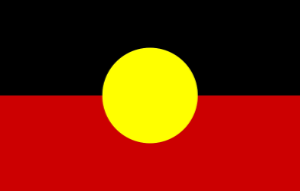The Death of a Pet
I have a Shoodle named Saffi who is central to my well being every day of the week. What is it that makes so many of us love pets? What is it that makes the bond so strong that they often feel as if they are part of our intimate family circle?
Why do others find the very idea distasteful? What is different about both groups?
When did dogs come to be regarded as ‘man’s best friend’? I don’t know the answers, but as a pet lover, I am interested in the questions and the answers, and am glad that they are currently being researched.
Some Background Information
Exhumations indicate that humans have had pets for many thousands of years, possibly for as long as humans have lived. Dogs were domesticated in Europe approximately 16,000 ago, then again in Asia some 14,000 years ago from two separate wolf lineages. Pets at that time were usually baby animals, kept for amusement until they matured and became more troublesome, at which time they were usually thrown back into the wild or eaten.
Primitive practises aside, I know that a small percentage of people worldwide still abuse power by ill treating anyone or anything vulnerable, but I’m choosing not to go down that path.
Statistics reveal that Americans currently own 78 million dogs, 85 million cats, 14 million caged birds, 12 million small mammals, and 9 million reptiles. I have no idea what the statistics are for Australia but imagine, simply from observation, that on a population basis the numbers might be similar.
The Social Role of Animals
In most societies, animals have been used for transport, entertainment, financial gain, as status symbols, in blood sports (difficult to acknowledge), for therapy, and as companions.
 Horses, dogs, seals, dolphins, lions, tigers, elephants, monkeys and many other animals have delighted people visiting zoos and animal parks, or amused and impressed them as they performed in circuses. Horse, dog and camel races have brought financial reward to many; in fact, almost any creature capable of movement has been used for racing at some time.
Horses, dogs, seals, dolphins, lions, tigers, elephants, monkeys and many other animals have delighted people visiting zoos and animal parks, or amused and impressed them as they performed in circuses. Horse, dog and camel races have brought financial reward to many; in fact, almost any creature capable of movement has been used for racing at some time.
Animals have been part of our work force forever. As already mentioned, horses, donkeys, camels and elephants were part of our earliest transport systems, carrying messages, people, and heavy loads.
Dogs in particular have an interestingly diverse range of occupations from those of Huskies who pull snow sleds, St. Bernard’s used to find people buried in avalanches, and sniffer dogs used to detect drugs at airports. Dogs are also used by the police force, and businesses needing watch or guard dogs.
Animals also play an important role in health care. Research has demonstrated the positive effect connection with animals can have on blood pressure, and on general health and well being. We are all familiar with the role of guide dogs, therapy dogs in nursing homes, dogs working with people suffering from anxiety or depression, bonding with children on the autism spectrum, alerting sufferers of impending epileptic seizures, and detecting certain cancers. Horses, cats, dolphins and many other animals have also been used for therapeutic purposes, providing an invaluable social role.
And last, but not least, animals – horses in particular – have always been an important part of our armed services. During world wars, soldiers became very attached to their animals, riding them into battle, often sleeping close to them at night to stay warm, and using them to transport injured comrades. Many wept unashamedly when they died. I am glad that war horses have been honoured with a memorial on the highway between Sydney and Canberra in NSW, and feel touched every time we pass that spot.
Everyday Relationship between Humans and Animals
Books, movies and TV series over the years have drawn attention to the relationships that can be formed between humans and other living creatures. More recently, Facebook and U Tube show appealing posts that demonstrate these warm, reciprocal and mutually beneficial attachments.
Movies such as ‘Lassie’, ‘Red Dog’, ‘Milo and Otis’, ‘Storm Boy’, and TV series like ‘Skippy’, and ‘Inspector Rex’ have entertained many, stirring a range of emotions. The list of animal movies and TV shows is endless. For people unable to have pets of their own, these visual and auditory illustrations can provide vicarious gratification as folk imagine themselves as part of the relationships they observe and admire.
Children and Pets
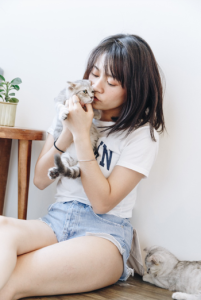 These days, many families introduce their children to pet ownership as a way of teaching them how to form responsible, caring relationships. The process of ‘responsibility’ has many ups and downs of course, with most children enthusiastically vowing to ensure that food and water are replenished daily, cages cleaned, walkable pets walked, and so on, but in most households, the tasks tend to fall back onto the parent’s shoulders until children fully integrate the concept of ‘responsible ownership’.
These days, many families introduce their children to pet ownership as a way of teaching them how to form responsible, caring relationships. The process of ‘responsibility’ has many ups and downs of course, with most children enthusiastically vowing to ensure that food and water are replenished daily, cages cleaned, walkable pets walked, and so on, but in most households, the tasks tend to fall back onto the parent’s shoulders until children fully integrate the concept of ‘responsible ownership’.
Animals have always been an important part of my own life. I grew up in a country town where we had our own cow and chooks, and canaries that sang happily from sun up to sun down. Anyone who has read my other Blogs will know that my mother sang and my father whistled while they worked, my sisters and I joining in as soon as we were old enough to follow suit. As I think now of the mix of whistling canaries, a singing mother, a whistling dad and 3 whistling and singing children, I find myself laughing, imagining what the neighbours might have thought of us all. A touch on the weird side methinks.
There was a paddock with two resident horses at the end of our street, beside the infants’ school, and friendships between the children and horses were quickly formed. We all fed the horses and convinced ourselves they talked to us, their beautiful brown eyes making contact as they nuzzled our hands. One day, convinced that one of them was sad and crying, I borrowed my dad’s hanky and raced back to the paddock to wipe its nose and dab its eyes. Maybe that was one of the early steps on the path to becoming a bereavement counsellor?
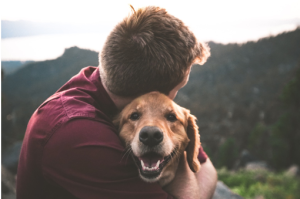 My dad’s affinity with all living things, plus weekend and school holiday visits to farms owned by our extended family, all contributed to the enjoyment my sisters and I felt in the company of animals. We learned about birth and death at those times, feeling privileged to watch baby animals being born, and we gradually became familiar with the process of death and decay, burial and cremation. We cared about all the animals but didn’t have the intense bonds we’ve experienced with our own pets, especially in our adult life. Farm animals were working animals, to be respected and treated well, but not to be pampered. They had a job to do.
My dad’s affinity with all living things, plus weekend and school holiday visits to farms owned by our extended family, all contributed to the enjoyment my sisters and I felt in the company of animals. We learned about birth and death at those times, feeling privileged to watch baby animals being born, and we gradually became familiar with the process of death and decay, burial and cremation. We cared about all the animals but didn’t have the intense bonds we’ve experienced with our own pets, especially in our adult life. Farm animals were working animals, to be respected and treated well, but not to be pampered. They had a job to do.
Grief When a Pet Dies
If we love our pets, if they are part of our family circle, we will grieve when they die. Grief is grief, and no matter what we are grieving, our reactions are pretty much the same. Our head knows the ‘who’ or the ‘what’, our heart simply knows that we hurt.
The deeper our attachment, the more central to our lives a pet is, the deeper and more prolonged our grief is likely to be. Every part of us can be affected – body, mind and soul – and it takes most of us a long time to learn how to live with their absence. Grief after all, is love expressed in the physical absence of those we love.
Similar to when a person dies, people tend to offer unasked for and inappropriate advice, usually along the lines of ‘you can get another one’. That may be true, but it’s the one that has died that we yearn for, and just as I suggest when a loved person dies, it’s best to grieve for what is lost before trying to fill the empty space.
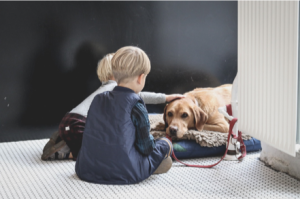 We can teach our children a lot about relationships and life in the way we deal with the death of a pet. Children benefit from being able to cry with their family, plan a burial, write messages of love and appreciation to place with the pet’s body, then tenderly wrap and bury them. Some children may want to make and decorate a special marker like a cross or memory stones, perhaps some other valued symbol, and place it at the grave site; others simply want to indicate the sacredness of that spot by placing flowers on the grave.
We can teach our children a lot about relationships and life in the way we deal with the death of a pet. Children benefit from being able to cry with their family, plan a burial, write messages of love and appreciation to place with the pet’s body, then tenderly wrap and bury them. Some children may want to make and decorate a special marker like a cross or memory stones, perhaps some other valued symbol, and place it at the grave site; others simply want to indicate the sacredness of that spot by placing flowers on the grave.
Later, we can honour and remember pets by talking about their contribution to our life, writing stories about them, by framing important photos, and perhaps making a memory book or box. In this way, even very young children learn that ‘in this family, people and animals remain important to us even when they are dead.’ If pets aren’t forgotten, children integrate and feel reassured by the fact that they too will be honoured, appreciated and remembered forever if they die prematurely.
Compassionate Leave
Some years ago I was asked on talk back radio if I supported the idea of compassionate leave after the death of a pet. My answer was a very clear YES.
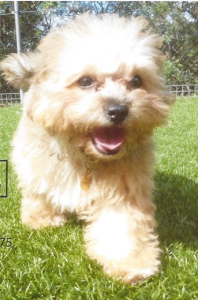 For some people, particularly those living alone, a pet is the most central relationship in their lives, a reason for getting up each day, and perhaps their only experience of unconditional love. Attachments formed with pets can be as significant and intense as those we create with partners, children, grandchildren, parents and friends, and when a beloved pet dies, grief can be heartbreaking.
For some people, particularly those living alone, a pet is the most central relationship in their lives, a reason for getting up each day, and perhaps their only experience of unconditional love. Attachments formed with pets can be as significant and intense as those we create with partners, children, grandchildren, parents and friends, and when a beloved pet dies, grief can be heartbreaking.
As I write these words I find myself hoping once again that Saffi – the much loved Shoodle that is central to the life my husband Mal and I currently enjoy – outlives us both. On the other hand, I wouldn’t want her to be left without us, so I quickly flip to the unrealistic ideal that we will all die at the same moment and be buried together.
A Personal Story of Grief after the Death of a Pet
I have changed some details to protect Jane’s privacy, even though she has given me permission to tell her story.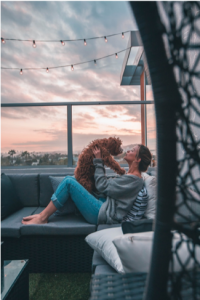
Last year, a former neighbour, a woman I’ll call Jane for anonymity, contacted me to ask if I would write something about grief after the death of a pet. Her dog had died, and her tears – liquid love as my husband eloquently describes them – were met with critical responses from so-called friends and colleagues. ‘It’s only a dog for heavens sake’, a hurtful line one colleague threw at her, ‘imagine how you’d feel if you had to cope with a child dying’.
Jane had been unable to have children because of the chemotherapy she received for childhood cancer. Ross, the man she married when she was 25, knew of her infertility at the time and assured her he didn’t need children. Their life was full and happy, but when they were in their late forties, he had a change of mind and after an affair with a younger colleague resulted in pregnancy, he left Jane to form a new family. She was heartbroken, but amazingly understanding, ensuring that their divorce wasn’t acrimonious. Just sad.
When Ross left, Jane was lonely, particularly of an evening when she came home to an empty house, so she decided to buy a dog. Friends tried to persuade her to buy a rescue dog but she ignored well meant advice and bought an 8 week old puppy – a Maltese-Shitzu cross she named Susie. From day one the two were inseparable. Susie slept with Jane, travelled everywhere with her, and changed her life completely. Invitations to social events were almost inevitably addressed ‘to Jane and Susie’, but if they weren’t, Jane found a reason for not attending. Susie was Jane’s baby, her reason for getting up early each morning, the joy she looked forward to each evening. They watched TV together, worked in the garden at weekends, played at the local park where they were often joined by children, their parents and dogs, or ran on the beach which was close by. She had no trouble connecting with people when Susie was with her.
As she got closer to retirement age, Jane began writing children’s books about their adventures, hoping to eventually find an interested publisher.
On her 64thbirthday, Jane noticed that Susie, now 16, was limping and seemed to be in pain. A trip to the vet confirmed her worst fears – Susie had cancer and her prognosis was very poor. The vet outlined the options, gave Jane a night or two to think things over, suggesting she bring Susie back to see him at the weekend. The most painful decision of her life resulted in her cradling Susie as she was euthanased, looking into her eyes to give her courage, hoping that Susie could feel her love until she took her last breath.
When Jane phoned me she was distraught, barely able to speak, and I didn’t feel like a pillar of strength at that moment either. Memories of the same situation with my own loved dogs flooded into my mind’s eye like a tidal wave, so we cried together. We arranged to meet later at the park where Jane and Susie used to play at weekends, and found a private sunny spot where we could sit and talk. I encouraged Jane to tell me the history of her relationships with pets, from her earliest memories. Her story was fascinating, so warm and loving, with lots of vignettes that made us both laugh. I’d always liked Jane because she was a great neighbour, but by the time we’d shared her life story and her 16 year relationship with Susie, my feeling for her had deepened. We parted that day as compassionate friends as well as past neighbours.
A year later Jane is now the owner of a rescue dog called Mabel, very different to the exuberant puppy Susie was initially, but suited to Jane’s current physical abilities and lifestyle. Jane felt comforted by the fact that both she and Mabel had experienced a lot of sadness in their lives and could now help each other learn how to remain fully involved in a very different kind of life.
If you are currently grieving the death of a beloved pet, contact your local vet to enquire about support services, think of starting one yourself, or read ‘Coping With Grief’, available from ‘A Friend’s Place’. Although the book is primarily about grief after the death of a loved person, it’s possible to extrapolate for death of a pet. As I said at the beginning – grief is grief. Our head may know the who or what, but our heart only registers the depth of connection and sorrow.
Help
Help is always available – at ‘A Friend’s Place’ or by contacting our outreach service.
Dianne McKissock OAM
NCCG Outreach Support Service
Email support for dying and bereaved people and anyone involved in their care
